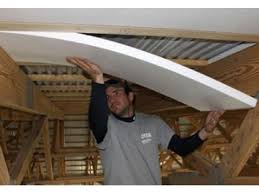Ensuring proper insulation in your home is paramount. Insulation foil stands out for its effectiveness and versatility among various insulation materials. Let’s delve into insulation foil and how it can significantly enhance your living space.
Definition of Insulation Foil
Insulation foil, also known as reflective foil insulation, is a type of insulation material designed to regulate indoor temperature by reflecting radiant heat. It typically consists of layers of aluminium foil reinforced with other materials, such as polyethylene bubbles or foam.
Importance of Home Insulation
Sustaining a cozy interior climate all year long depends on effective insulation. By minimizing heat transfer, insulation helps regulate temperature, reduces energy consumption, and lowers utility bills. Also, proper insulation enhances indoor air quality and reduces your home’s carbon footprint.
What is Insulation Foil?
Insulation foil is engineered to reflect radiant heat, making it an excellent thermal insulator. Unlike traditional insulation materials that primarily slow heat transfer, insulation foil effectively blocks radiant heat, keeping indoor spaces cooler in summer or warmer in winter.
Types of Insulation Foil
There are two main types of insulation foil: radiant barrier foil and reflective insulation foil. Radiant barrier foil consists of a single layer of aluminium foil, while reflective insulation foil incorporates additional layers, such as foam or bubble wrap, for added thermal resistance.
Benefits of Insulation Foil
Energy Efficiency
Insulation foil reduces heat loss in the winter and heat gain in the summer, which greatly increases energy efficiency. Creating a thermal barrier reduces the workload on heating and cooling systems, leading to lower energy consumption and utility costs.
Cost-Effectiveness
Investing in insulation foil offers long-term cost savings by reducing energy bills or extending the lifespan of HVAC equipment. Because of its sturdy design, which guarantees years of dependable performance, it is an affordable option for homeowners.
Environmental Impact
Insulation foil is environmentally friendly as it reduces the need for heating and cooling, lowering greenhouse gas emissions associated with energy production. Additionally, many insulation foils are made from recycled materials, reducing their environmental footprint.
Installation Process
Preparation
Before installing insulation foil, ensure that the target area is clean, dry, and free of any obstructions. Measure the dimensions accurately and gather the necessary tools and materials, including insulation foil, adhesive tape, and utility knife.
Application Methods
Insulation foil can be installed in various locations, including attics, walls, floors, and crawl spaces. Depending on the surface and insulation type, it can be stapled, glued, or taped in place. Follow manufacturer guidelines and safety precautions during installation.
Safety Measures
Wear the required safety equipment, such as gloves, goggles, and a mask, when handling insulation foil, to prevent skin irritation and respiratory issues. Avoid contact with sharp edges and ensure proper ventilation in enclosed spaces.
Comparing Insulation Foil with Others
Insulation Foil vs Fiberglass
While fibreglass insulation is effective against conductive heat transfer, insulation foil offers superior performance against radiant heat. Additionally, insulation foil is non-toxic, non-allergenic, and easier to install than fibreglass.
Insulation Foil vs Foam Boards
Foam boards provide excellent thermal insulation but may lack the reflective properties of insulation foil. Combining foam boards with insulation foil can enhance insulation performance and energy savings.
Common Mistakes to Avoid
Improper Installation
One common mistake is improper installation, such as leaving gaps or overlaps in insulation foil layers. To minimize thermal inefficiency and stop air leaks, make sure the seal is tight.
Underestimating Insulation Needs
Another mistake is underestimating insulation needs, leading to insufficient coverage and compromised performance. Calculate the required insulation R-value based on climate and building requirements to achieve optimal results.
Maintaining Insulation Foil
Regular Inspections
Periodically inspect insulation foil for signs of damage, such as tears, punctures, or moisture buildup. Address any issues promptly to prevent heat loss and maintain energy efficiency.
Repairing Damaged Areas
In case of damage, repair insulation foil using appropriate materials such as foil tape or adhesive. Reinforce seams and joints to ensure a continuous thermal barrier.
FAQs (Frequently Asked Questions)
- How long does insulation foil last? Insulation foil can last decades with proper installation and maintenance, providing long-term energy savings and comfort.
- Can insulation foil be used in all climates? Insulation foil is suitable for various climates and can effectively regulate indoor temperature regardless of external weather conditions.
- Is insulation foil eco-friendly? Many insulation foils are made from recycled materials and are recyclable, making them eco-friendly for sustainable construction.
- Can I install insulation foil myself? Yes, insulation foil installation is relatively straightforward and can be done as a DIY project with the right tools and instructions.
- Will insulation foil reduce noise pollution? While insulation foil primarily targets thermal insulation, it can also help dampen noise transmission to some extent, contributing to a quieter indoor environment.
- What is the average cost of insulation foil? The insulation foil cost varies depending on material quality, thickness, and area coverage. On average, expect to pay between $0.50 to $2.00 per square foot for insulation foil.
Insulation foil is a versatile, cost-effective solution for enhancing home comfort or energy efficiency. By reflecting radiant heat and minimizing thermal transfer, insulation foil helps create a more sustainable living environment while reducing utility expenses. Invest in insulation foil today and experience the difference it can make in your home.


